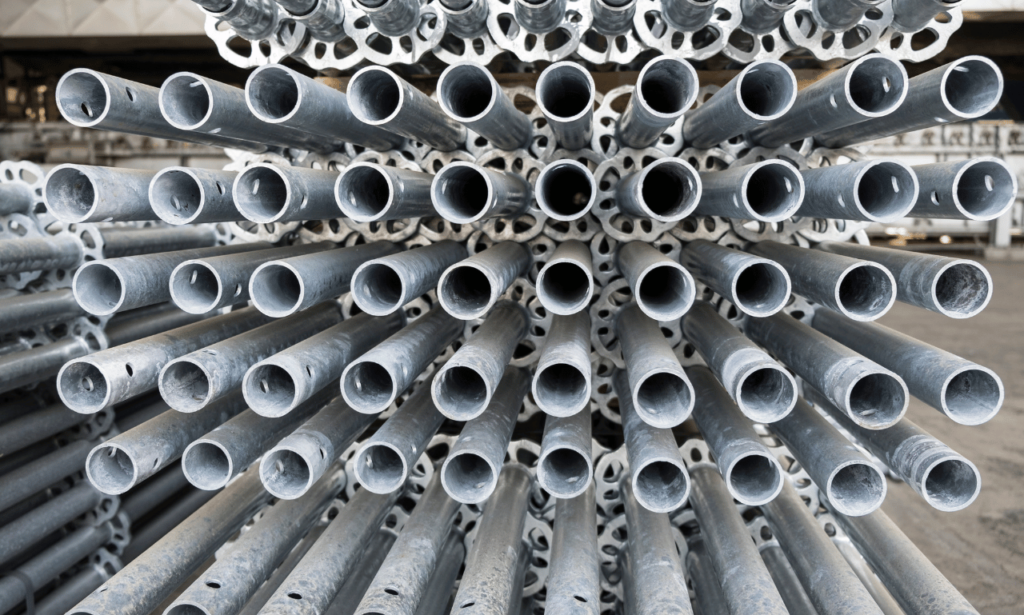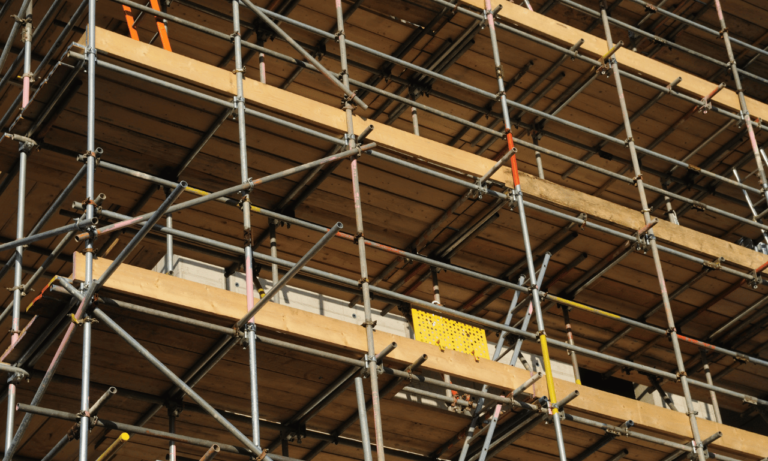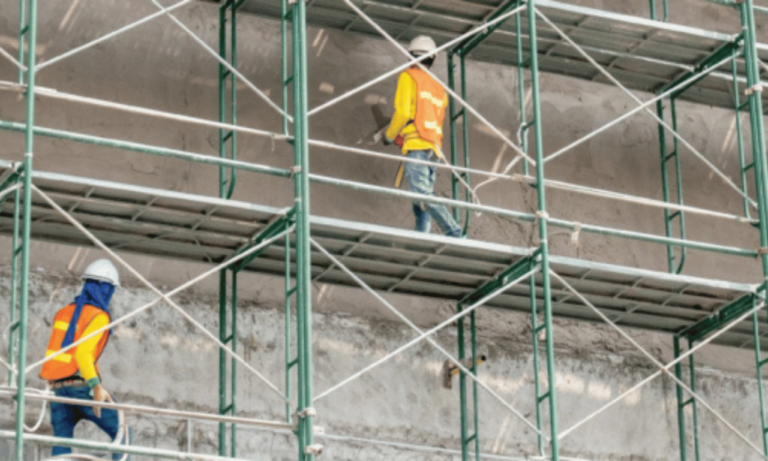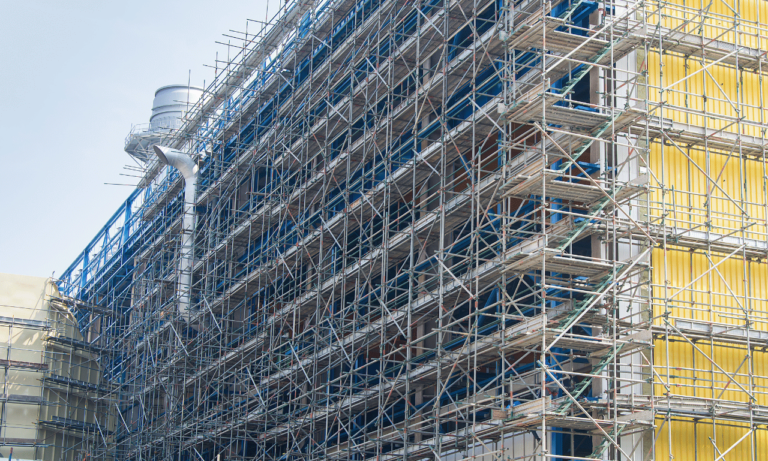Phone:
(+65)8319-0742
Scaffolds are an integral part of the construction industry, providing a safe and efficient platform for workers to perform various tasks at different heights. However, it is essential to recognize the potential hazards of unsafe scaffolding and prioritize safety on construction sites.
According to the Bureau of Labor Statistics, unsafe scaffolding caused a significant number of injuries and fatalities in the U.S. in 2020. To mitigate these risks, employers and employees must understand the importance of using stack scaffolding, a versatile and adaptable solution that enhances both safety and efficiency.
Key Takeaways:
- Stack scaffolding provides a stable and versatile platform for construction workers.
- Adjustable and made from durable materials like aluminum, stack scaffolding offers flexibility and strength.
- Mobility allows for easy movement around the construction site.
- To ensure safe use, follow specific safety tips for stack scaffolding, including fall protection measures, safe access, and collapse prevention.
- Proper stacking and material handling guidelines contribute to a safer work environment.
The Benefits of Stack Scaffolding
Stack scaffolding offers several benefits in the construction industry. It provides a stable and versatile platform for workers to perform tasks at various heights.
One of the key advantages of stack scaffolding is its adjustability. With the ability to easily adjust the height and configuration, stack scaffolding can cater to different project requirements. This flexibility allows workers to efficiently complete tasks at different elevations without the need for additional scaffolding structures.
Another significant benefit of stack scaffolding is its durable construction. These scaffolding systems are typically made from strong and long-lasting materials such as aluminum. The use of high-quality materials ensures that stack scaffolding provides reliable support and can withstand heavy loads, enhancing safety on the construction site.
The mobility of stack scaffolding is another advantage that contributes to increased efficiency in construction projects. Unlike fixed scaffolding structures, stack scaffolding can be easily moved around the site, providing workers with access to different areas as needed. This mobility eliminates the need for workers to constantly disassemble and reassemble scaffolding, saving valuable time and resources.
Overall, the benefits of stack scaffolding, including its stability, adjustability, durability, and mobility, lead to enhanced efficiency and productivity on construction projects. By providing a safe and reliable platform for workers to perform their tasks, stack scaffolding allows for smoother workflow and faster completion of projects.
Next, we will explore important safety tips for using stack scaffolding to ensure a secure working environment.
Safety Tips for Using Stack Scaffolding
Ensuring the safe use of stack scaffolding is of utmost importance for both workers and employers. By following specific safety tips, the risk of accidents and injuries can be significantly reduced. Here are some essential safety measures to consider:
Fall Protection
Fall protection is crucial when working at heights. Workers should be equipped with proper fall protection gear, including body harnesses, lanyards, and lifelines. Additionally, guardrail systems with toe boards must be installed to prevent falls and objects from falling off the scaffold.
Safe Access
Safe access to the stack scaffolding is vital to prevent accidents. Workers should use ladders, stairs, or ramps to access the scaffold, avoiding climbing on the braces or scaffold frame. Proper access ensures stability and reduces the risk of falls.
Preventing Falling Objects
Objects falling from height can cause serious injuries. To prevent such incidents, toe boards, netting, or barricades should be installed around the stack scaffolding. These safety measures provide a protective barrier against falling objects and help maintain a safe work environment.
Avoiding Power Lines
Power lines pose a significant risk when working with stack scaffolding. Workers must stay away from overhead power lines and ensure that the scaffolding is at least 10 feet away from any exposed power source. This precaution helps to prevent electrocution and other electrical hazards.
Collapse Prevention
Proper foundation and footing are essential for the stability of stack scaffolding. Overloading should be avoided to prevent collapse. It is also crucial to ensure that the scaffold is properly braced and secured to withstand the weight and provide a secure working platform.
By following these safety tips, construction workers can ensure a safe working environment when using stack scaffolding. Prioritizing safety not only protects workers from injuries but also enhances overall efficiency and productivity on construction sites.
Proper Stacking and Material Handling Guidelines

Proper stacking and material handling are crucial aspects of ensuring workplace safety in construction and industrial settings. By following safety guidelines and implementing best practices, workers can prevent accidents and injuries related to material stacking. Here are some key guidelines to consider:
Level Surface
When stacking materials, it is important to ensure that the surface is level and stable. Uneven surfaces can cause stacks to become unstable and increase the risk of load shifts or collapses. Choose a flat and sturdy surface for stacking materials to maintain stability throughout the process.
Weight Distribution
Proper weight distribution is essential to prevent stacks from toppling over or causing strain on the structure. Heavier items should be positioned on the lower or middle shelves, while lighter items can be placed on the top. This arrangement helps maintain stability and reduces the risk of accidents caused by imbalanced loads.
Housekeeping
Good housekeeping practices play a vital role in minimizing hazards associated with material stacking. Keep aisles and passageways clear of any obstacles to ensure safe movement and prevent tripping hazards. Regularly remove any debris or obstructions in the stacking area to maintain a clean and organized workspace.
Proper Lifting Techniques
When handling and stacking materials, it is essential to use proper lifting techniques to prevent back injuries and musculoskeletal strains. Workers should bend their knees, keep their back straight, and use their leg muscles to lift heavy objects. Avoid twisting or jerking motions while lifting and take regular breaks to avoid overexertion.
Compliance with Safety Guidelines
Complying with safety guidelines, such as those set by the Occupational Safety and Health Administration (OSHA), is crucial for secure and stable material stacking. Follow OSHA guidelines for bags, containers, bundles, and other specific stacking requirements to ensure stability and prevent accidents.
By incorporating these guidelines into their work practices, workers can minimize the risk of accidents and injuries related to material stacking. Creating a safe and well-organized work environment is key to ensuring the efficiency and productivity of construction and industrial projects.
Conclusion
In conclusion, stack scaffolding is a valuable tool that promotes safety and efficiency in construction projects. By adhering to safety guidelines such as implementing proper fall protection measures, ensuring safe access, preventing falling objects, avoiding power lines, and taking collapse prevention precautions, workers can create a secure working environment. Moreover, utilizing proper stacking and material handling techniques contributes to a safer and more organized work area.
By prioritizing safety and following efficient practices, construction crews can significantly enhance productivity while reducing the risk of accidents and injuries on the job site. Stack scaffolding’s stability, versatility, and adjustability make it a favorable choice for construction projects, allowing workers to carry out tasks at various heights with ease.
Overall, the incorporation of stack scaffolding not only guarantees the safety of workers but also improves the overall efficiency of construction projects. By integrating safety measures and adopting proper handling practices, construction teams can accomplish their tasks effectively and successfully complete their projects, creating a safer and more productive working environment.
FAQ
What are the benefits of using stack scaffolding in construction?
Stack scaffolding offers a stable and versatile platform for working at various heights. It is easily adjustable, made from durable materials like aluminum, and is mobile, increasing efficiency and productivity on construction sites.
What safety tips should be followed when using stack scaffolding?
Safety tips for using stack scaffolding include ensuring fall protection measures are in place, providing safe access to the scaffold, using guardrail systems, preventing falling objects, avoiding overhead power lines, and taking collapse prevention measures.
What guidelines should be followed for proper stacking and material handling?
Proper stacking and material handling guidelines include placing materials on a level surface, stacking them in a straight and even manner, positioning heavier loads on the lower or middle shelves, maintaining clear aisles and passageways, using proper lifting techniques, and complying with safety standards for stability and secure stacking.

















